Canine ACL tears are by far, the most common small animal orthopedic condition seen in veterinary medicine. Fortunately, it is also one of the most successfully treated conditions in veterinary medicine. In the majority of canine ACL cases, TPLO is the ideal treatment with minimal complications, lowest risk of “breakdown” requiring additional surgery and relative quick return to comfortable, full activity. Thanks to nerve blocks and epidural analgesia, almost all dogs undergoing TPLO at Colorado Canine Orthopedics can safely and comfortably return home the day of surgery. Of course, we have a 24/7 ICU if needed or requested.
In a recent published survey, by far the majority of board-certified surgeons would choose the TPLO if their own dog had an ACL tear.
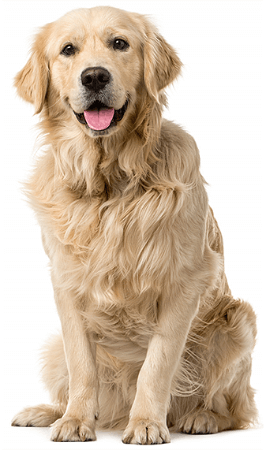
Colorado Canine Orthopedics offers consultation followed by surgery the same day. Patients can undergo an examination and radiographic review, followed by minimally invasive arthroscopy and TPLO surgery (if needed) all in the same day.

Tibial plateau leveling osteotomy helps restore joint biomechanics by altering the joint’s “sliding motion” thought to be the underlying cause of canine ACL tears. The downward, backward sliding motion of the femur is eliminated following surgery resulting in joint stability (Figure 1).
The stability is primarily a straight-forward biomechanical effect of the level tibial plateau, however the TPLO also slightly repositions the caudal cruciate ligament, which adds to overall joint stability. Recent biomechanical studies have examined dogs with normal stifle joints, dogs with ACL tears and dogs that have undergone current surgical techniques and found the TPLO is superior in restoring normal joint biomechanics.
A typical TPLO procedure takes an experienced surgeon about one hour. Anesthesia is extremely safe using today’s anesthetic agents, equipment and monitoring devices. Once the patient is safely anesthetized, nerve blocks are performed effectively numbing the leg for approximately 20 hours. Similar blocks are routinely used in human orthopedics.
Prior to surgery, but while under general anesthesia, specific radiographs (X-rays) are obtained and imported into an orthopedic planning computer program to determine the tibial plateau angle and preoperative planning (figure 2).
Once in the operating room, an arthroscope is inserted through a several millimeter opening to confirm the diagnosis, debride (clean-up) the torn ligament and inspect the remainder of the joint and treat meniscal pathology (figure 3).
Following arthroscopy, a small surgical approach is made to the top of the tibia and the osteotomy is performed and secured using a specialized titanium bone plate (figure 4).
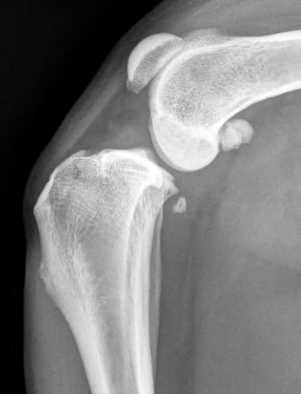
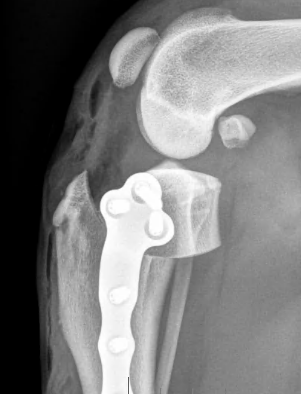
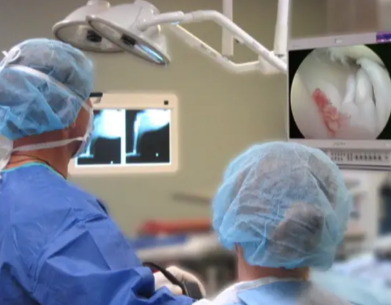
At Colorado Canine Orthopedics, virtually all animals undergoing TPLO wake up pain-free thanks to nerve block analgesia and can comfortably walk out of the hospital the day of surgery. Weight bearing is permitted immediately. Most dogs start using the leg within a day or two of their TPLO surgery. Sutures are buried and do not require removal. Icing is helpful for a few days following surgery.
In the days and weeks following TPLO surgery, most dogs are very comfortable. The surgeons at Colorado Canine Orthopedics find TPLO patients to be more comfortable following surgery than following many of the antiquated procedures. This comfort is the result of minimally invasive arthroscopy rather than open joint procedures, the stability and security afforded by today’s bone plate technology and of course, the preemptive nerve block. In our opinion, old style repairs involving soft tissues lack stability compared to bone fixation, leading to more postoperative discomfort and pain. Colorado Canine Orthopedics typically uses titanium bone plates with a specialize locking screw technology.
Postoperative restrictions include in house confinement with short leash walks initially, progressing to longer and longer walks as weeks go by. Stairs are usually permitted with supervision. The TPLO is one of the strongest repairs in veterinary surgery, but off leash outdoor activity and excessive rough housing should be avoided until the osteotomy heals.
The skin incision heals in about 10-14 days, but the bone takes months to heal completely. While bone takes longer to heal, it heals stronger than any other connective tissue in the body! Complete bone healing takes about two to three months but varies from animal to animal and is somewhat dependent on a dog’s age. Once healed, nearly all dogs return to full function.
The average cost of a TPLO at Colorado Canine Orthopedics can vary from patient to patient due to factors that may be hard to determine until a physical examination has been completed. Please contact our office to discuss a pre-consultation estimate for your pet. A refined, doctor specified estimate will be presented at the end of your pet’s initial consultation.
All surgery fees include pre-surgical x-rays, anesthesia and monitoring, nerve block or epidural, implants, post-operative x-rays and routine go home medications. Consultation, pre-operative bloodwork and four and eight and week post-operative x-rays are not included.
At Colorado Canine Orthopedics we are committed to providing only state of the art, non-compromised pet healthcare. We realize some pet owners may find this level of care relatively costly. However, despite the inherently expensive nature of our work, we are dedicated to providing the highest level of care at the most affordable price possible. We believe if you compare our fees to other specialty practices you will find this true.
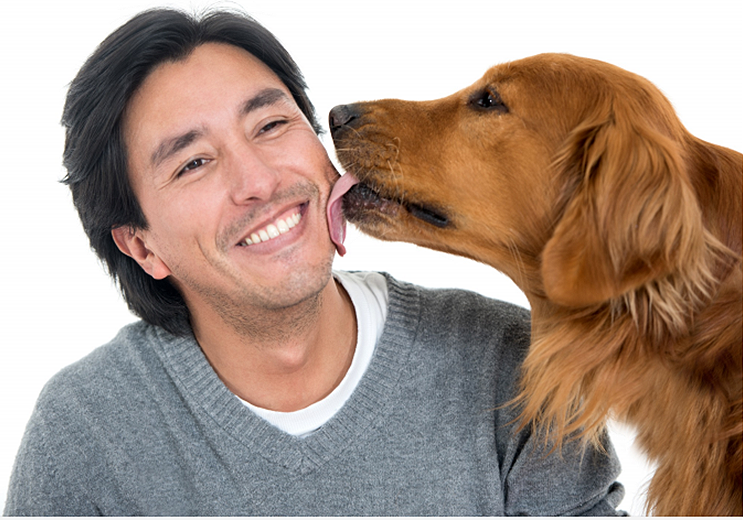
We know you have a variety of questions about TPLO surgery for your dog. We’ve answered many commonly asked questions here, but you can be certain your dog’s surgeon will answer any of your questions prior to and after surgery.
Q: Does my pet have to spend the night in the hospital?
A: No. Virtually all dogs undergoing TPLO at Colorado Canine Orthopedics can be discharged the day of surgery. Of course, we have a fully staffed 24/7 ICU if your pet does spend the night.
Q: Will this technique have a negative effect on the opposite leg?
A: No, quite the opposite. The TPLO provides the best possible outcome with no negative affect on the opposite leg.
Q: Will the opposite knee have the same problem?
A: Forty percent of all dogs with ACL tears on one side will have the problem on the opposite side. The most effective ways to decrease this percentage are early surgical repair leading to symmetrical weight distribution and weight loss in over-weight dogs.
Q: Is TPLO only for large dogs?
A: No. Many small and toy breed dogs have the greatest degree of tibial plateau slope. Small breed dogs typically have excellent outcomes following TPLO surgery.
Q: What technique would Colorado Canine Orthopedics’ surgeons perform on their own dogs?
A: Unquestionably the TPLO
Q: Is the postoperative period more difficult following TPLO than following older techniques?
A: In our opinion, it is not. In numerous situations, where an older technique had been performed on one side and a TPLO performed on the other side, clients have reported that the TPLO resulted in less discomfort.
Q: Can a TPLO be performed on an animal when an older technique has failed?
A: Yes. In many cases, we have successfully performed TPLOs in patients with failed TTAs, tightrope repairs or older replacement techniques.
Q: Will my dog experience pain in the postoperative period?
A: Minimal. All dogs undergoing TPLO at Colorado Canine Orthopedics receive pre-operative nerve blocks, similar to human orthopedics. Most clients feel their pet’s discomfort level is quite tolerable.
Q: How long does it take for healing?
A: The osteotomy takes 2-3 months to heal. During this time your pet can have a reasonable amount of leash activity.
Q: How many TPLOs have the doctors at Colorado Canine Orthopedics performed?
A: Our doctors have performed tens of thousands of TPLOs over the past 20 years.
Q: How will I know how to care for my pet after surgery?
A: At Colorado Canine Orthopedics we prepare a detailed set of written discharge instructions for each patient. We carefully review this information with you prior to discharge.
Q: What should I expect when I get home the night of surgery?
A: Your pet will most likely be able to walk (but not well) when you get home. Most patients find their comfort zone once home and sleep the evening and night away. Your pet’s surgeon will call the night of surgery to check on your pet and answer any questions. You will also be given the doctors’ cell phone number in case you have urgent questions or concerns in the evenings on weekends.
1. Dogs, like humans, may not require surgery following an ACL tear.
Not true. Unfortunately, the anatomy and biomechanics of the canine stifle (knee) differs from humans. The sloping canine tibial plateau in results in joint sub-luxation (dislocation) during weight bearing. This radiographic animation demonstrates the detrimental instability during weight bearing following a canine ACL tear (Figure 1). Because of this, untreated canine ACL tears result in progressive clinical signs, meniscal tearing, severe osteoarthritis (OA) and debilitating lameness.
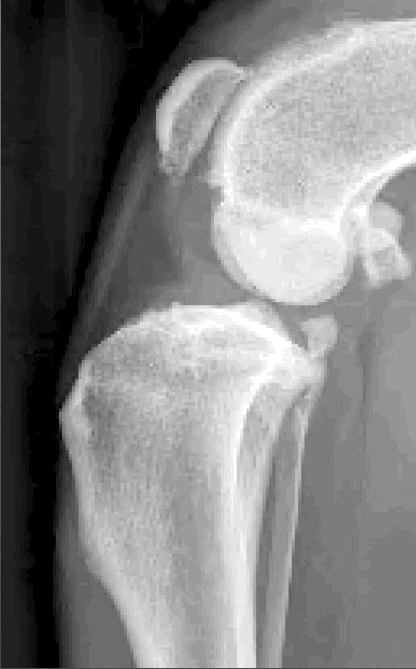
2.The same surgical techniques used in humans are effective in dogs.
Not true. Replacement techniques using biological grafts are the standard for humans with ACL tears. Similar grafts and techniques have been unsuccessful in dogs due to persistent biomechanical stress. This stress is associated with the sloping tibial plateau present in dogs but not humans.
3. Recovery from a TPLO is more difficult than old style replacement techniques.
Not true. In many instances we have seen dogs with a “fishing line” repair or tight rope have a more prolonged recovery than dogs who have undergone a TPLO.
4. Postoperative pain is greater following TPLO than old style replacement techniques.
Not true. Almost all TPLO patients are very comfortable following surgery. In fact, the surgeons at Colorado Canine Orthopedics find TPLO patients to be more comfortable following surgery than following many other procedures. This comfort is, in large part, due to the stability afforded by today’s bone plate technology. The bone/plate/screw combination provides better stability than any other repair on any other type of tissue. Stability equals comfort.
5. Recovery time is greater following TPLO than “Old Style” repairs.
Partially true. It is true that bone healing takes longer than soft tissues. Old style repairs are as strong as they will ever be as soon as the surgeon ties the knot. However old-style repairs are not as strong as the TPLO at any point after surgery. Bone healing is a double-edged sword; it takes longer to heal but heals stronger than any other connective tissue in the body! Complete bone healing takes about three months but varies from animal to animal and is somewhat dependent on age.
6. Stricter confinement is needed following the TPLO compared to other procedures.
Not true. The TPLO is the strongest ACL technique performed. Following any surgery, dogs require some degree of restriction. TPLO patients should be restricted to the house with leash walks only. Stairs are usually permitted with supervision.
7. TPLO increases the risk of the opposite side tearing.
Not true. In fact, quite the opposite is the case. Because canine ACL tears are caused by biomechanical wear and tear, 40% of animals that tear one side will someday tear the other. The best way to minimize this risk is to equalize weight bearing by performing a TPLO on the affected side. Weight loss is also important in overweight animals. Nearly all dogs left untreated will tear the other side because of shifting weight to the intact side.
8. TPLO is only for show or performance dogs.
Not true. Most surgeons agree the TPLO is the best procedure whether your pet’s an agility star, tennis ball player or lap warmer.
9. TPLO is expensive.
Partially true. Old style repairs can be performed less expensively. The old techniques often involve the use of simple hand instrumentation and a piece of fishing line or suture material. The TPLO involves the use of sophisticated plating equipment, surgical drills and specialized saws. At Colorado Canine Orthopedics we frequently see patients with unsuccessful old-style repairs. It goes without saying these situations result in added expense for the client and additional surgery for the pet.
10. TPLO is only for large breed dogs.
Not true. If fact, small breed dogs often have the steepest tibial plateau slopes and are at high risk for failure following “old style” repairs. It is true that only experienced surgeons should perform small breed TPLO procedures.